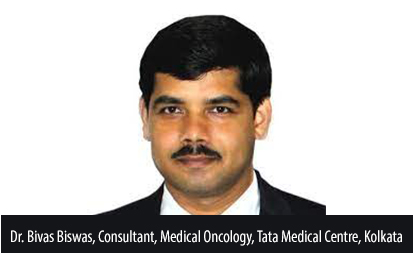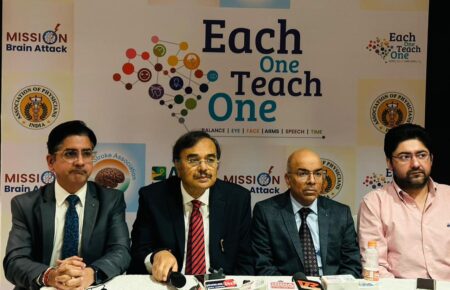Indian patients with EGFR-positive advanced non-small cell lung cancer (NSCLC) to benefit with monotherapy drug option
Physicians in India can now access multiple first-line treatment options for patients with common and relatively difficult-to-treat EGFR mutation (Exon 21 L858R) Patients in India with metastatic non-small cell lung cancer (NSCLC) with epidermal growth

Physicians in India can now access multiple first-line treatment options for patients with common and relatively difficult-to-treat EGFR mutation (Exon 21 L858R)
Patients in India with metastatic non-small cell lung cancer (NSCLC) with epidermal growth factor receptor (EGFR)-activating mutations, can now benefit from monotherapy drugs that have improved progression-free survival (PFS) and overall survival,. Exon 21 L858R is one of the most common EGFR activating mutations accounting for ~32% of EGFR mutated NSCLC in India. With a higher tumor mutation burden, the L858R tumors are genetically instable, aggressive and also have a shorter survival rate as compared to its commoner counterpart (Del 19 EGFR mutation). Moreover, patients with these mutations do not respond that well to tyrosine kinase inhibitors (TKIs), making it more difficult to treat and also have a shorter survival rate1,. This is critical for India, where the high disease-attributable mortality of lung cancer makes this condition an important public health issue.
In India, lung cancer is the fourth most commonly diagnosed cancer and the third most common cause of cancer-related deaths, after breast and cervical cancer, killing nearly 67,000 people in 20206.
“Globally, lung cancer treatment has changed from histology-based to target-based approach, as the management of NSCLC patients is becoming increasingly complex and better,” said Dr. Bivas Biswas, Consultant, Medical Oncology at Tata Medical Center, Kolkata. “Since prolongation of survival as well as improved quality of life is a key concern among our patients in India, monotherapy drug options are an addition to the current armamentarium and is a step forward in the right direction to provide physicians with a new first-line treatment option for patients with this disease.”






